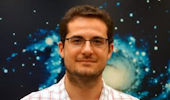The Physics & Astronomy Colloquium Series presents Antonios Kontos of MIT Kavli Institute for Astrophysics and Space Research Laser Interferometer Gravitational-Wave Observatory Massachusetts Institute of Technology on “Challenges and opportunities in Nuclear Astrophysics: Studying stellar fireworks and the big bang with stable and radioactive ion-beams” on Thursday, Jan. 21, at 4:10 p.m. in Walter 245.
Abstract: All the elements that we see around us today on Earth were at some point created in a hot stellar or cosmological plasma. Light nuclei in these hot environments combine via nuclear reactions to make heavier elements, making life possible and interesting. Since the fusion of two light elements is accompanied by the release of energy, it also makes for some beautiful fireworks, as evident by observed supernovae, classical novae and x-ray bursts. While nuclear reactions are a driving force behind astrophysical and cosmological events, they are extremely hard to study in the laboratory. The reason is that Coulomb repulsion between nuclei is too strong, and nuclei react very infrequently with each other, making each such event a needle in a haystack. To make matters worse, there is an emerging need for more precise measurements of key nuclear reactions.
In the first part of the presentation I will touch on some topics in nuclear astrophysics and how we study the relevant nuclear reactions, in spite of the many challenges. The focus of the remaining talk will be on specific experimental techniques with stable and unstable beams as well as what we can do in the cases were a given nuclear reaction is beyond experimental reach.
















Comments